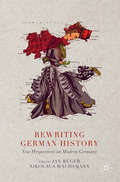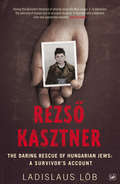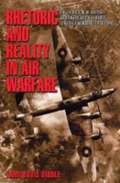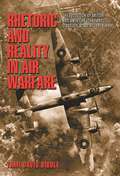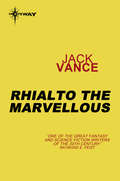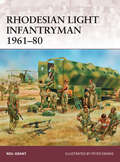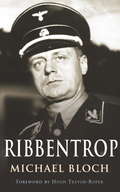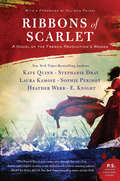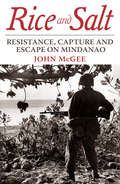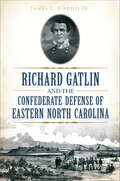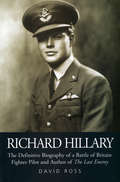- Table View
- List View
Revolutionary Mexico: The Coming and Process of the Mexican Revolution
by John Mason HartThis acclaimed reinterpretation of the Mexican Revolution, based on new evidence obtained in Mexican and American archives and on the historical literature of recent years, is available here in the tenth anniversary edition, complete with a new Preface by the author.
Revolutionary Mothers: Women in the Struggle for America's Independence
by Carol BerkinThis comprehensive history illuminates a fascinating and unknown side of the struggle for American independence. Carol Berkin shows us how women played a vital role throughout the conflict. The women of the Revolution were most active at home, organizing boycotts of British goods, raising funds for the fledgling nation, and managing the family business while struggling to maintain a modicum of normalcy as husbands, brothers and fathers died.
Revolutionary Pairs: Marx and Engels, Lenin and Trotsky, Gandhi and Nehru, Mao and Zhou, Castro and Guevara
by Larry CeplairA political historian examines five of the twentieth century’s most significant revolutions, and the partnerships that led the way.Successful revolution requires two triggering elements: a crisis or conjuncture and revolutionary actors who are organized in a dedicated revolutionary party, armed with a radical ideology, and poised to act. While previous revolutions were ignited by small collectives, many in the twentieth century relied on strategic relationships between two exceptional leaders: Marx and Engels (Communism), Lenin and Trotsky (Russia), Ghandi and Nehru (India), Mao and Zhou (China), and Castro and Guevara (Cuba). These partnerships changed the world.In Revolutionary Pairs, Larry Ceplair tells the stories of five revolutionary struggles through the lens of famous duos. While each relationship was unique?Castro and Guevara bonded like brothers, Mao and Zhou like enemies?in every case, these leaders seized the opportunity for revolution and recognized they could not succeed without the other. The first cross-cultural exploration of revolutionary pairs, this book reveals the undeniable role of personality in modern political change.
Revolutionary Prudence Wright: Leading the Minute Women in the Fight for Independence
by Beth AndersonHere is the first-ever picture book about female Revolutionary War activist Prudence Wright, who rallied the first and only group of "minute women" to fight the British, changing history in the process.Prudence Wright had a spark of independence. Annoyed when the British king held back freedoms in colonial Massachusetts, feisty and fearless Prudence had enough. She said no! to British goods, determined to rely on her resourcefulness and ingenuity to get by. And when British troops continued to threaten the lives of her family and community, she assembled and led the "minute women" of Pepperell to break free of tradition. This untold story of a courageous and brave woman from the Revolutionary War continues to inspire today.
Revolutionary Rogues: John André and Benedict Arnold
by Selene CastrovillaNCSS/CBC Notable Trade Social Studies BookKansas Reading Circle ChoiceBank Street College Best BookTappantown Historical Society&’s Achievement Award Young fans of the Broadway smash "Hamilton" will enjoy this riveting nonfiction picture book that unfolds like a play, telling a story from American history. Gravely injured and with little chance for more military honors, Major General Benedict Arnold seeks reward and recognition another way. He contacts Major John André, the new head of British intelligence and another man determined to prove himself. Arnold and André strike a deal and use Arnold&’s intelligence to take over West Point, the strategic American fort. The plan ultimately fails, leading to André&’s capture and death and Arnold&’s loss of reward and glory. Author Selene Castrovilla and illustrator John O&’Brien brilliantly capture the tensions and high drama of these two revolutionary rogues by highlighting their similarities and differences and demonstrating how they brought about their own tragic ends. This title also includes an afterword, timelines of the lives of both men, an extensive bibliography, and a list of key places to visit.
Revolutionary War Forts: New York
by Michael GarlockCovering the battles fought by the garrisons of the forts. The first of four volumes on Revolutionary War forts which together will provide a comprehensive overview. During the Revolutionary War, forts in New York were instrumental in initiating and maintaining America’s desire for independence and helped the nascent nation to eventually prevail. These forts saw crucial, campaign-determining naval battles, and pivotal land engagements between battle-hardened well-led British troops and unproven American militia. In both land and sea engagements the garrisons deployed a range of weapons including different calibers of smooth-bore cannon, howitzers, musket, bayonets, and even tomahawks. Covering Amsterdam, Clinton, Fort Clinton at West Point, Dayton, Decker, Flagstaff, Au Fer, Brooklyn, Defiance, Franklin, Golgotha, Herkimer, Jay, Klock, Montgomery, Niagra Old Stone Fort, Salonga, Stanwix, Ticonderoga, Wadsworth, and Washington, this expert text discusses design, armament, and current status of the forts. It explores their garrisons, commanders, and the battles fought, as well as the spatial and military dependent relationships these forts had with one another.
Revolutions: How They Changed History And What They Mean Today
by Peter FurtadoLeading historians from around the world reflect on the great revolutions of modern history and explore their lasting legacies. Whether it’s because their rhetoric—“liberty, fraternity, equality”—articulates those ideals to which we most aspire, or because we are shocked by the destructive forces that are unleashed when social conventions break down, revolutions hold a distinct place in the popular imagination. And while all revolutions are born of civil unrest, each is unique in that it’s a product of its time, its society, and its people, and the outcomes vary dramatically, from liberal reform to cruel dictatorship. In Revolutions, the follow-up to the bestselling Histories of Nations, twenty-four leading historians—most writing about their country of origin—consider global revolutions, from England’s Glorious Revolution of 1688 and the American Revolution in 1776 to the Irish Revolution in the early twentieth century and the Arab Spring of 2011. Reflecting not only on their causes, crises, and outcomes, but also on their legacies and implications in today’s society, these historians answer key questions: What were the main events and dominant ideologies? Who were the leading protagonists? Are revolutionary pasts remembered critically in national history, mythologized, or even hidden? And why? Authoritative and enlightening, Revolutions reflects on the events, ideologies, and legacies of twenty-four revolutions from the seventeenth century to the present day, providing an overview of some of the most politically significant events in modern history.
Revolver: Sam Colt and the Six-Shooter That Changed America
by Jim RasenbergerA sweeping, definitive biography of Samuel Colt—the inventor of the legendary Colt revolver (a.k.a. six-shooter)—which changed the US forever, triggering the industrial revolution and the settlement of the American West.Patented in 1836, the Colt pistol with its revolving cylinder was the first practical firearm that could shoot more than one bullet without reloading. For many reasons, Colt&’s gun had a profound effect on American history. Its most immediate impact was on the expansionism of the American west, where white emigrants and US soldiers came to depend on it, and where Native Americans came to dread it. The six-shooter became the iconic weapon of gun-slingers, outlaws, and cowboys—some willing to pay $500 out west for a gun that sold for $25 back east. In making the revolver, Colt also changed American manufacturing—his factory revolutionized industry in the United States. Ultimately, Colt and his gun-making brought together the two most significant forces of change before the Civil War—the industrial revolution in the east, Manifest Destiny in the west. Brilliantly told, Revolver brings the brazenly ambitious and profoundly innovative industrialist and leader Samuel Colt to vivid life. In the space of his forty-seven years, he seemingly lived five lives: he traveled, womanized, drank prodigiously, smuggled guns to Russia, bribed politicians, and supplied the Union Army with the guns they needed to win the Civil War. Colt lived during an age of promise and progress, but also of slavery, corruption, and unbridled greed, and he not only helped to create this America, he completely embodied it. By the time he died in 1862 in Hartford, Connecticut, he was one of the most famous men in nation, and one of the richest. While Revolver is a riveting and revealing biography of Colt, a man who made significant contributions to our country during the nineteenth century, it&’s also a lively and informative historical portrait of America during a time of extraordinary transformation.
Rewriting German History: New Perspectives on Modern Germany
by Nikolaus Wachsmann Jan RügerRewriting German History offers striking new insights into key debates about the recent German past. Bringing together cutting-edge research and current discussions, this volume examines developments in the writing of the German past since the Second World War and suggests new directions for scholarship in the twenty-first century.
Rezso Kasztner: The Daring Rescue of Hungarian Jews: A Survivor's Account
by Ladislaus LöbTwo months after his eleventh birthday, on 9 July 1944, the gates of Bergen-Belsen concentration camp closed behind Ladislaus Löb. Five months later, with the Second World War still raging, he crossed the border into Switzerland, cold and hungry, but alive and safe. He was not alone, but part of a group of some 1,670 Jewish men, women and children from Hungary, who had been rescued from the Nazis as a result of a deal made by a man called Rezso Kasztner - himself a Hungarian Jew - with Adolf Eichmann, the chief architect of the Holocaust. Twelve years and a miscarriage of justice later Kasztner was murdered by an extremist Jewish gang in his adopted home of Israel. To this day he remains a highly controversial figure, regarded by some as a traitor and by many others as a hero. He was accused of betraying the bulk of the Hungarian Jewry by hand-picking only those who were politically and personally dear to him, or those from whom he could benefit financially, and the judge of his post-war trial concluded that he had 'sold his soul to Satan'.Rezso Kasztner tells his story - and also the story of a child who lived to grow up after the Holocaust thanks to him. A compelling combination of history and memoir, it is also an examination of one individual's unique achievement and a consideration of the profound moral issues raised by his dealings with some of the most evil men ever known.
Rhetoric and Reality in Air Warfare: The Evolution of British and American Ideas about Strategic Bombing, 1914-1945
by Tami Davis BiddleA major revision of our understanding of long-range bombing, this book examines how Anglo-American ideas about "strategic" bombing were formed and implemented. It argues that ideas about bombing civilian targets rested on--and gained validity from--widespread but substantially erroneous assumptions about the nature of modern industrial societies and their vulnerability to aerial bombardment. These assumptions were derived from the social and political context of the day and were maintained largely through cognitive error and bias. Tami Davis Biddle explains how air theorists, and those influenced by them, came to believe that strategic bombing would be an especially effective coercive tool and how they responded when their assumptions were challenged. Biddle analyzes how a particular interpretation of the World War I experience, together with airmen's organizational interests, shaped interwar debates about strategic bombing and preserved conceptions of its potentially revolutionary character. This flawed interpretation as well as a failure to anticipate implementation problems were revealed as World War II commenced. By then, the British and Americans had invested heavily in strategic bombing. They saw little choice but to try to solve the problems in real time and make long-range bombing as effective as possible. Combining narrative with analysis, this book presents the first-ever comparative history of British and American strategic bombing from its origins through 1945. In examining the ideas and rhetoric on which strategic bombing depended, it offers critical insights into the validity and robustness of those ideas--not only as they applied to World War II but as they apply to contemporary warfare.
Rhetoric and Reality in Air Warfare: The Evolution of British and American Ideas about Strategic Bombing, 1914-1945 (Princeton Studies in International History and Politics #98)
by Tami BiddleA major revision of our understanding of long-range bombing, this book examines how Anglo-American ideas about "strategic" bombing were formed and implemented. It argues that ideas about bombing civilian targets rested on--and gained validity from--widespread but substantially erroneous assumptions about the nature of modern industrial societies and their vulnerability to aerial bombardment. These assumptions were derived from the social and political context of the day and were maintained largely through cognitive error and bias. Tami Davis Biddle explains how air theorists, and those influenced by them, came to believe that strategic bombing would be an especially effective coercive tool and how they responded when their assumptions were challenged. Biddle analyzes how a particular interpretation of the World War I experience, together with airmen's organizational interests, shaped interwar debates about strategic bombing and preserved conceptions of its potentially revolutionary character. This flawed interpretation as well as a failure to anticipate implementation problems were revealed as World War II commenced. By then, the British and Americans had invested heavily in strategic bombing. They saw little choice but to try to solve the problems in real time and make long-range bombing as effective as possible. Combining narrative with analysis, this book presents the first-ever comparative history of British and American strategic bombing from its origins through 1945. In examining the ideas and rhetoric on which strategic bombing depended, it offers critical insights into the validity and robustness of those ideas--not only as they applied to World War II but as they apply to contemporary warfare.
Rhialto the Marvellous
by Jack VanceRhialto the Marvellous takes up the personal and political conflicts among a conclave of two dozen magicians of Ascolais and Almery in the 21st Aeon. The shocking appearance of the Llorio the Murtha, a powerful female force from an earlier aeon threatens to unbalance nature by "ensqualming" or feminizing the magicians. This triggers a tremendous struggle for power and the other mages turn against Rhialto. Hoping to reestablish his rightful place, Rhialto travels to other aeons to restore the missing Perciplex which projects the Mostrament, the constitution of the association. In his final adventure, Rhialto must, ultimately, travel to the very ends of time and space to confront an old adversary whom he had wronged and must commit further misdeeds to restore order.
Rhodesian Light Infantryman 1961-80
by Peter Dennis Neil GrantThe 1st Battalion, The Rhodesian Light Infantry (RLI), was one of the most innovative and successful counter-insurgency units in modern history, developing and perfecting a range of tactics and operational concepts that have since become standard practise in modern military forces. Formed in 1961 and then re-formed in 1964 as a commando battalion after the dissolution of the Federation of Rhodesia and Nyasaland, the RLI was an all-white unit that incorporated foreign soldiers from South Africa, The UK, USA, Canada and Europe into its ranks. It was a key weapon in independent Rhodesia's struggle against the Zimbabwe African National Liberation Army (ZANLA) and Zimbabwe People's Revolutionary Army (ZIPRA) during the bloody Rhodesian Bush War. This comprehensive study explores the unit's dramatic history, revealing the RLI's fearsome airborne and combat capacity, which gave the unit, at times, near total tactical superiority against its opponents.
Rhythm of War: Book Four of the Stormlight Archive (The Stormlight Archive #4)
by Brandon SandersonAn instant #1 New York Times Bestseller and a USA Today and Indie Bestseller!The Stormlight Archive saga continues in Rhythm of War, the eagerly awaited sequel to Brandon Sanderson's #1 New York Times bestselling Oathbringer, from an epic fantasy writer at the top of his game.After forming a coalition of human resistance against the enemy invasion, Dalinar Kholin and his Knights Radiant have spent a year fighting a protracted, brutal war. Neither side has gained an advantage, and the threat of a betrayal by Dalinar’s crafty ally Taravangian looms over every strategic move.Now, as new technological discoveries by Navani Kholin’s scholars begin to change the face of the war, the enemy prepares a bold and dangerous operation. The arms race that follows will challenge the very core of the Radiant ideals, and potentially reveal the secrets of the ancient tower that was once the heart of their strength. At the same time that Kaladin Stormblessed must come to grips with his changing role within the Knights Radiant, his Windrunners face their own problem: As more and more deadly enemy Fused awaken to wage war, no more honorspren are willing to bond with humans to increase the number of Radiants. Adolin and Shallan must lead the coalition’s envoy to the honorspren stronghold of Lasting Integrity and either convince the spren to join the cause against the evil god Odium, or personally face the storm of failure.Other Tor books by Brandon SandersonThe CosmereThe Stormlight Archive● The Way of Kings● Words of Radiance● Edgedancer (novella)● Oathbringer● Dawnshard (novella)● Rhythm of WarThe Mistborn SagaThe Original Trilogy● Mistborn● The Well of Ascension● The Hero of AgesWax and Wayne● The Alloy of Law● Shadows of Self● The Bands of Mourning● The Lost MetalOther Cosmere novels● Elantris● Warbreaker● Tress of the Emerald Sea● Yumi and the Nightmare Painter● The Sunlit ManCollection● Arcanum Unbounded: The Cosmere CollectionThe Alcatraz vs. the Evil Librarians series● Alcatraz vs. the Evil Librarians● The Scrivener's Bones● The Knights of Crystallia● The Shattered Lens● The Dark Talent● Bastille vs. the Evil Librarians (with Janci Patterson)Other novels● The Rithmatist● Legion: The Many Lives of Stephen Leeds● The Frugal Wizard’s Handbook for Surviving Medieval EnglandOther books by Brandon SandersonThe Reckoners● Steelheart● Firefight● CalamitySkyward● Skyward● Starsight● Cytonic● Skyward Flight (with Janci Patterson)● DefiantAt the Publisher's request, this title is being sold without Digital Rights Management Software (DRM) applied.
Ribbentrop
by Michael BlochHailed in turns as 'excellent', 'intelligent', 'scrupulously fair', 'remarkable', 'impressive', and 'definitive', this superb book, by one of the pre-eminent writers of his generation, focuses on the life of Joachim von Ribbentrop, Hitler's Foreign Minister from 1938 until the end of the Third Reich. At the heart of German power during the war, this strange, sinister and intriguing character was violently anti-British, and encouraged Hitler in a policy that led to war with Great Britain. His grandiose attempts at alliance-building produced a disastrous military coalition with Italy and Japan, and the infamous Pact with the Soviet Union. It was a career that would end on the gallows at Nuremberg, where he headed the death procession.Written with verve, pace and the subtle intelligence of a world-class biographer, Michael Bloch's universally praised book vividly portrays this bizarre and historically neglected figure.
Ribbentrop
by Michael BlochHailed in turns as 'excellent', 'intelligent', 'scrupulously fair', 'remarkable', 'impressive', and 'definitive', this superb book, by one of the pre-eminent writers of his generation, focuses on the life of Joachim von Ribbentrop, Hitler's Foreign Minister from 1938 until the end of the Third Reich. At the heart of German power during the war, this strange, sinister and intriguing character was violently anti-British, and encouraged Hitler in a policy that led to war with Great Britain. His grandiose attempts at alliance-building produced a disastrous military coalition with Italy and Japan, and the infamous Pact with the Soviet Union. It was a career that would end on the gallows at Nuremberg, where he headed the death procession.Written with verve, pace and the subtle intelligence of a world-class biographer, Michael Bloch's universally praised book vividly portrays this bizarre and historically neglected figure.
Ribbons of Scarlet: A Novel of the French Revolution's Women
by Heather Webb Kate Quinn Stephanie Dray Sophie Perinot Laura Kamoie E. Knight“The French Revolution comes alive through the eyes of six diverse and complex women, in the skilled hands of these amazing authors.”--Martha Hall Kelly, New York Times bestselling author of Lilac GirlsA breathtaking, epic novel illuminating the hopes, desires, and destinies of princesses and peasants, harlots and wives, fanatics and philosophers—seven unforgettable women whose paths cross during one of the most tumultuous and transformative events in history: the French Revolution.Ribbons of Scarlet is a timely story of the power of women to start a revolution—and change the world.In late eighteenth-century France, women do not have a place in politics. But as the tide of revolution rises, women from gilded salons to the streets of Paris decide otherwise—upending a world order that has long oppressed them.Blue-blooded Sophie de Grouchy believes in democracy, education, and equal rights for women, and marries the only man in Paris who agrees. Emboldened to fight the injustices of King Louis XVI, Sophie aims to prove that an educated populace can govern itself--but one of her students, fruit-seller Louise Audu, is hungrier for bread and vengeance than learning. When the Bastille falls and Louise leads a women’s march to Versailles, the monarchy is forced to bend, but not without a fight. The king’s pious sister Princess Elisabeth takes a stand to defend her brother, spirit her family to safety, and restore the old order, even at the risk of her head.But when fanatics use the newspapers to twist the revolution’s ideals into a new tyranny, even the women who toppled the monarchy are threatened by the guillotine. Putting her faith in the pen, brilliant political wife Manon Roland tries to write a way out of France’s blood-soaked Reign of Terror while pike-bearing Pauline Leon and steely Charlotte Corday embrace violence as the only way to save the nation. With justice corrupted by revenge, all the women must make impossible choices to survive--unless unlikely heroine and courtesan’s daughter Emilie de Sainte-Amaranthe can sway the man who controls France’s fate: the fearsome Robespierre.
Rice and Salt: Resistance, Capture and Escape on Mindanao
by John Hugh McGeeRice and Salt, originally published in 1962, is the World War Two account of U.S. Army General John Hugh McGee. Prior to the War, McGee served as an instructor to the Philippine Scouts and Philippine Army. In 1942, with the fall of the Philippines, he was taken prisoner and held at Malaybalay Prison Camp and then at the Davao Prison Camp, both on Mindanao. In June 1944, the Japanese began moving the prisoners northward to Manila on the prison ship Yashu Maru. However, on the night of June 15th, McGee escaped by jumping overboard when that ship was in Zamboanga harbor, swam to shore, and made contact with Muslim and Christian soldiers he had helped train before the war. Subsequently McGee joined with guerrilla forces operating on Mindanao. Notable was McGee’s leadership of survivors of a torpedoed prison ship, providing them with medical care, food and shelter. McGee continued his military career, including service training Rangers during the Korean conflict before his retirement in 1961. McGee passed away on November 24, 1991. The book includes McGee’s sketches of the prison camps, and maps of the Mindanao region.
Rich Man's War, Poor Man's Fight
by Jeanette KeithDuring World War I, thousands of rural southern men, black and white, refused to serve in the military. Some failed to register for the draft, while others deserted after being inducted. In the countryside, armed bands of deserters defied local authorities; capturing them required the dispatch of federal troops into three southern states.Jeanette Keith traces southern draft resistance to several sources, including whites' long-term political opposition to militarism, southern blacks' reluctance to serve a nation that refused to respect their rights, the peace witness of southern churches, and, above all, anger at class bias in federal conscription policies. Keith shows how draft dodgers' success in avoiding service resulted from the failure of southern states to create effective mechanisms for identifying and classifying individuals. Lacking local-level data on draft evaders, the federal government used agencies of surveillance both to find reluctant conscripts and to squelch antiwar dissent in rural areas.Drawing upon rarely used local draft board reports, Selective Service archives, Bureau of Investigation reports, and southern political leaders' constituent files, Keith offers new insights into rural southern politics and society as well as the growing power of the nation-state in early twentieth-century America.
Rich Relations: The American Occupation of Britain, 1942-1945
by David ReynoldsThe fascinating social and political history of a time when a million and a half American servicemen crowded onto a small island, training and waiting for a conflict which would eventually cost many of them their lives. "A superb job of telling one of the most fascinating stories of World War II. "--Stephen E. Ambrose. 16 pages of photos, maps, charts, and political cartoons. Index.
Richard Bong: America's #1 Ace Fighter Pilot of World War II (American War Heroes)
by Don KeithThe heroic true story of Major Richard Bong, America&’s greatest fighter pilot of the Pacific War and the nation&’s top flying ace of World War IIArriving as a fresh US Army Air Forces pilot in New Guinea in late 1942, Richard Bong wasted no time taking on the Japanese, shooting down two planes in an early skirmish—an action that earned him a Silver Star. Over the next two years, Bong would amass the US armed forces&’ most impressive record of aerial victories of the entire war, surpassing even the great Eddie Rickenbacker&’s World War I tally and notching forty kills. In December 1944, he was personally awarded the Medal of Honor by General Douglas MacArthur. Now acclaimed author Don Keith recounts the remarkable saga of Bong&’s war years as well as his tragic death while serving as a test pilot.
Richard Gatlin and the Confederate Defense of Eastern North Carolina (Civil War Series)
by James L. Gaddis Jr.After the Confederate shelling of Fort Sumter in April 1861, North Carolina took steps toward war. Governor John Ellis commandeered Federal forts, raised regiments and enlisted the aid of Mexican War hero and Kinston native Richard C. Gatlin. Under the new Confederacy, Gatlin commanded the Confederate Department of North Carolina as a brigadier general. He was charged with the defense of the Tar Heel State, and his failure to prevent the Union takeover of the coast has been lost in the annals of Civil War history. Join author and historian James L. Gaddis Jr. for an overlooked yet harrowing tale of power, politics, tragedy and war.
Richard Hillary: The Definitive Biography of a Battle of Britain Fighter Pilot and Author of The Last Enemy
by David RossThe authoritative biography of the WWII ace fighter pilot, hero of the Battle of Britain and author of the classic wartime memoir The Last Enemy. As both a legendary flying ace and an accomplished author, Richard Hillary achieved a unique kind of immortality during his tragically short life. Born in Australia and raised in England, he attended Oxford University before joining the Royal Air Force at the outbreak of World War II. Flying Spitfires in the 603 Squadron, he became an ace in the Battle of Britain. Though he managed to survive being shot down in September 1940, he suffered severe burns to his face and hands. It was during his long and painful recovery that Hillary wrote his masterpiece, The Last Enemy. Then, anxious to return to flying, he died when his Bristol Blenheim bomber crashed in &‘mysterious&’ circumstances in 1943. Cutting through myth and misinformation, biographer David Ross draws on extensive archival research, including from the Richard Hillary Trust Archive in Oxford, as well as interviews with Hillary&’s contemporaries. This complete biography also features many previously unseen photographs.
Richard I: The Crusader King (Penguin Monarchs)
by Thomas AsbridgeRichard I's reign is both controversial and seemingly contradictory. One of England's most famous medieval monarchs and a potent symbol of national identity, he barely spent six months on English soil during a ten-year reign and spoke French as his first language. Contemporaries dubbed him the 'Lionheart', reflecting a carefully cultivated reputation for bravery, prowess and knightly virtue, but this supposed paragon of chivalry butchered close to 3,000 prisoners in cold blood on a single day. And, though revered as Christian Europe's greatest crusader, his grand campaign to the Holy Land failed to recover the city of Jerusalem from Islam.Seeking to reconcile this conflicting evidence, Thomas Asbridge's incisive reappraisal of Richard I's career questions whether the Lionheart really did neglect his kingdom, considers why he devoted himself to the cause of holy war and asks how the memory of his life came to be interwoven with myth. Richard emerges as a formidable warrior-king, possessed of martial genius and a cultured intellect, yet burdened by the legacy of his dysfunctional dynasty and obsessed with the pursuit of honour and renown.








